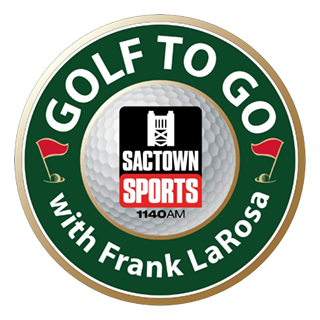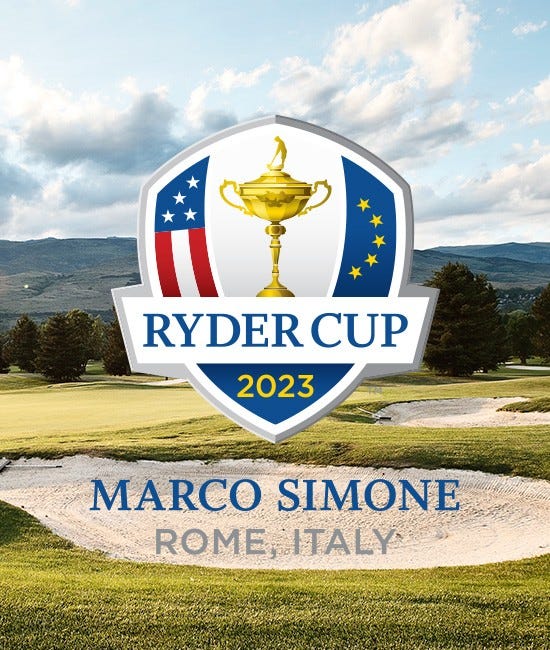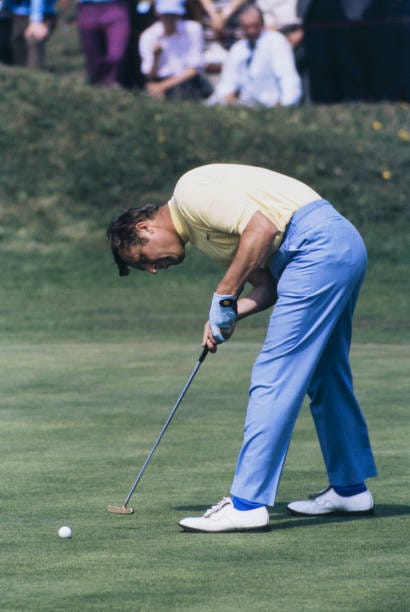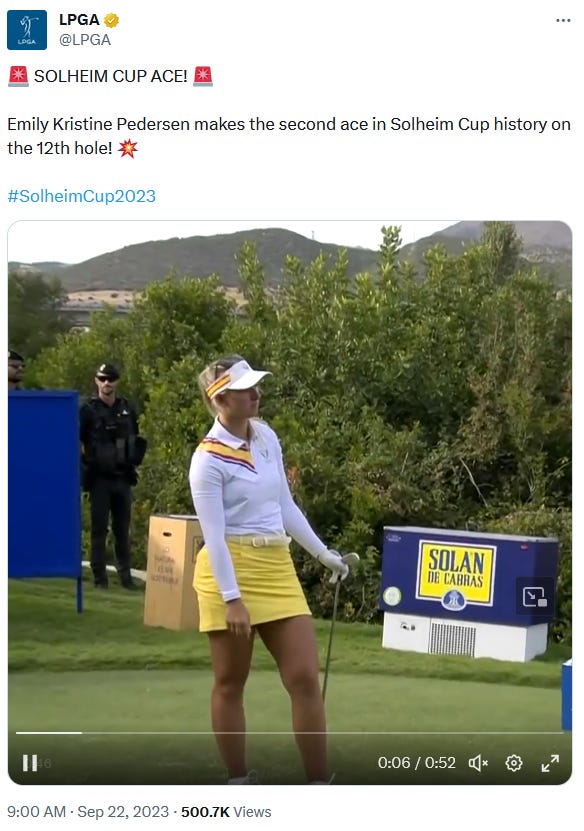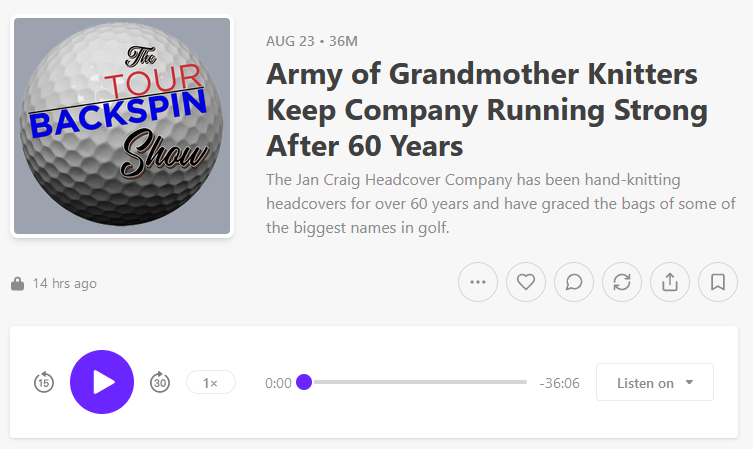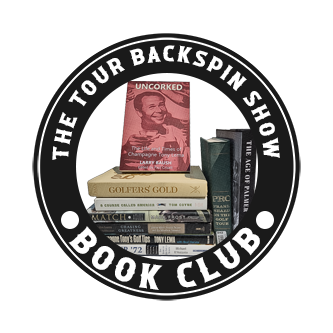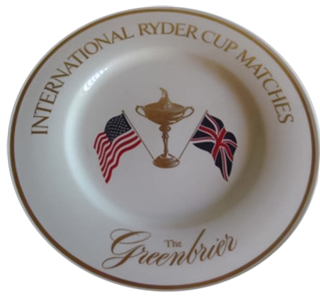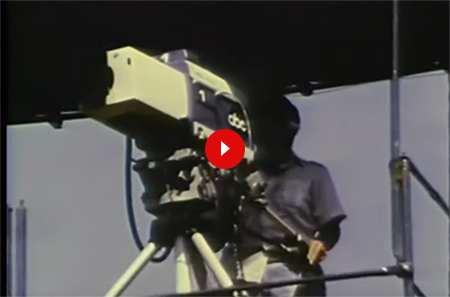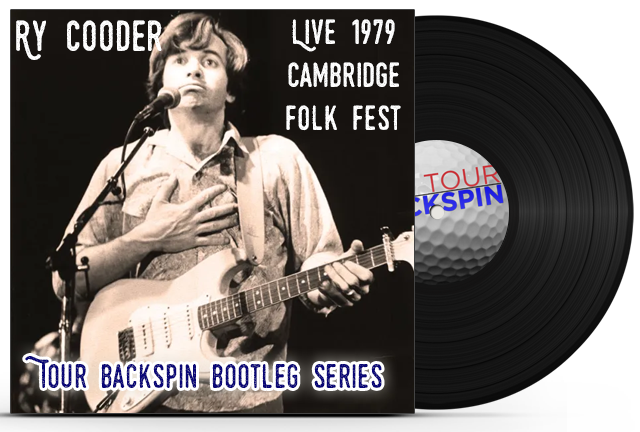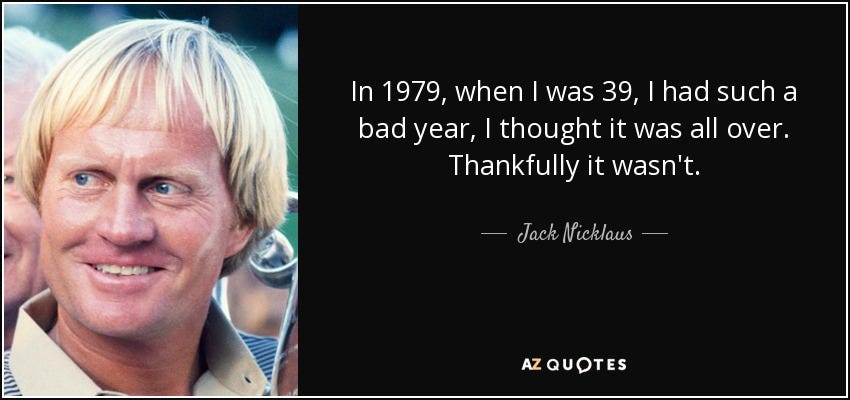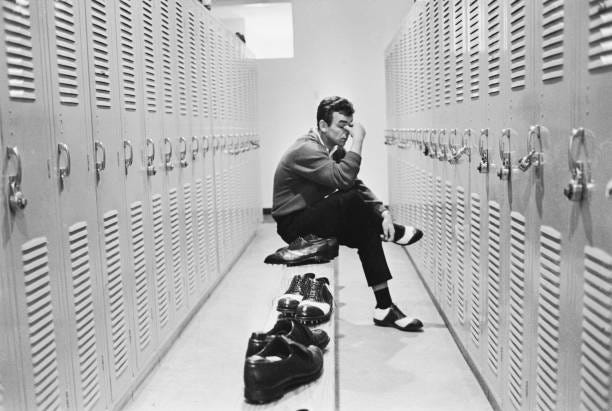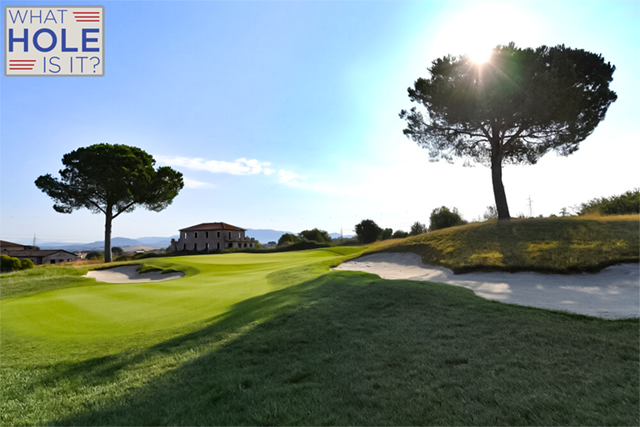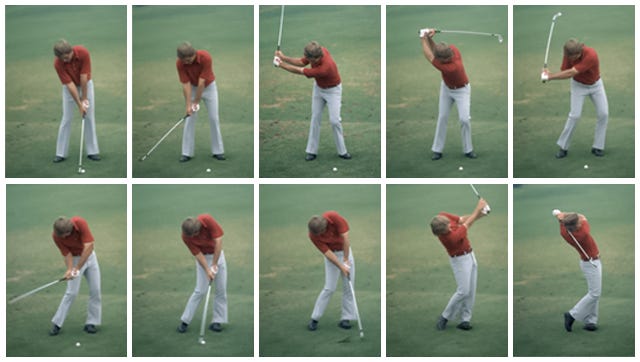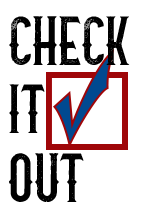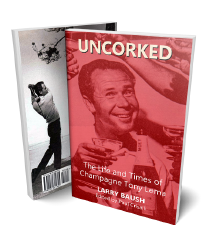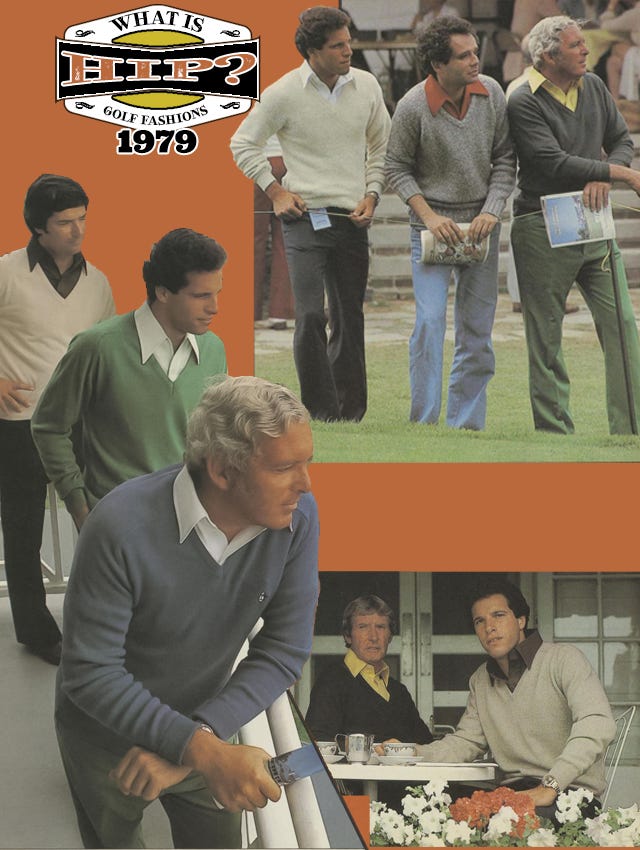A New Era of Competitive Ryder Cup Matches
The 1979 matches were the first to include players from continental Europe signaled a new era in which the matches would become incredibly competitive
To my friends at Rancho Murieta Country Club and those around Sacramento—I’m on the radio! Check out the encore presentation of Golf To Go Radio Hour on SACTOWN SPORTS 1140 this Saturday morning at 8 am where I talk with the host, Frank LaRosa, about Tony Lema and the PGA TOUR in the 1960s and 1970s. You can listen HERE and we’ll post a recording of the interview in a future edition of Tour Backspin.
It’s Ryder Cup week! We’re celebrating with our second week of Ryder Cup coverage.
The Solheim Cup provided a great warm-up for watching a team event and proved, again, how quickly things can change on the last day during the backnine. Caroline Hedwall was one of the heroes for the Europeans as she fought her way back from a three down with six to play deficit to defeat Ally Ewing on the home green. Her heroics helped the Europeans gain a tie for the matches resulting in them retaining the cup. But the real hero of the cup was Carlota Cinganda playing in front of her country compatriots playing in four matches and winning four points. It was a heckuva show.
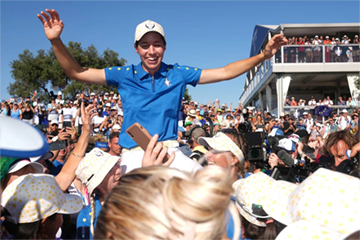
We’re continuing our Ryder Cup coverage with the matches held at The Greenbrier resort in White Sulpher Springs, WV in 1979. This was the first Ryder Cup with players from continental Europe. Scroll down to see how the matches played out.
R.I.P. Sir Michael Bonallack, Britain’s greatest-ever amateur golfer, as well as secretary of the Royal & Ancient Golf Club from 1983 to 1999. He then served as captain in 2000. He was a regular competitor in The Open Championship with his best showing a T11 in 1959 when he finished six shots behind the winner, Gary Player. He played in three Masters tournaments missing the cut each time.
In last week’s Tour Backspin Poll, 94% of respondents wondered what Sergio Garcia was smoking when he thought he could talk his way onto the Ryder Cup team while 6% of respondents loved his passion for the event.
In this week’s Tour Backspin Poll, we got one simple question for you—who you got? Team U.S.A. or Team Euro? Let your voice be heard!
Tour Backspin Poll
Clip You Might Have Missed
Historic.
It was 1979 when Royal Kaanapali on Maui added a second 18 holes. Check it out in this week’s Vintage Ad.
We’re trying something new with our music this week. It’s a bootleg of a live show. Thank you to pastdaily.com (click on the links or the album cover we created) HERE. Let us know if you liked this change in the comments section below.
Lanny Wadkins, star of our feature story, has his quick and powerful swing featured in this week’s Swing Like a Pro. Scroll down to view.
Get the Tour Backspin Newsletter delivered to your email inbox for FREE.
Watch for our interview with Frank Beard coming up on Tour Backspin Show podcast, hopefully next week.
Listen to The Tour Backspin Show podcast on Substack with the above links, or on Spotify, Amazon Music, and Apple Podcast.
If you like golf history, check out the Your Golfer’s Almanac podcast. Host Michael Duranko celebrates birthdays, milestones, and other accomplishments that occurred on the day in golf history. Listen HERE.
Congratulations to Dean DiBerardino who correctly identified hole #2 at Pinehurst #2, in Pinehurst, NC in last week’s WHAT HOLE IS IT? Dean beat out one other correct answer in the random drawing and commented on his entry form saying, “I literally work to the left of that tee. Lol.” We have a prize pack in the mail to Dean. Check out the 2023 leader board and scroll down for your chance to win in this week’s WHAT HOLE IS IT?
Thank you to those who attended the inagural virtual meeting of The Tour Backspin Book Club where we discussed my book, Uncorked, The Life and Times of Champagne Tony Lema. We will be announcing the next book that we will discuss, with the author, in the next couple of weeks.
We’re playing Ryder Cup Trivia again in this week’s Tour Backspin Quiz. Scroll down to play.
Did you miss a previous newsletter? You can view it HERE. Forward this email to a friend. Was this newsletter forwarded to you? You can sign up HERE.
Okay, we're on the tee, let's get going.
Enjoy!
Larry Baush
Rookies Lead U.S. Team to Victory in the 1979 Ryder Cup
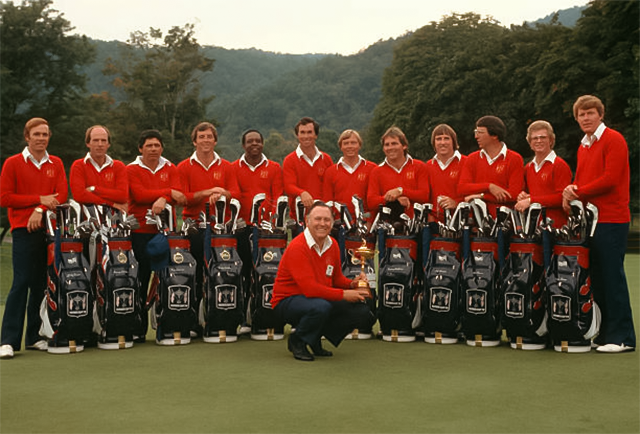
In 1977 Tom Weiskopf qualified for the U.S. Ryder Cup team but he was so disinterested in playing in the event that he went hunting for bighorn sheep in the Canadian Rockies the week of the matches. The Ryder Cup had become such a lopsided affair that it was hard for both the players and fans of the event to get too worked up about the matches. The U.S. team dominated the matches having won all but three of the 22 matches, and never lost on American soil.
“Everybody loves making the team, but nobody wants to play in the matches.”
Jack Nicklaus was alarmed by this and discussed the problem with the British PGA figurehead, Lord Derby.
Nicklaus recalled the conversation recently telling Tom D’Angelo of The Palm Beach Press, “I said, ‘Everybody loves making the team, but nobody wants to play in the matches. Include the European players and you’ll have far more competitive matches.’ They had some very good players.”
Lord Derby agreed with the logic of Nicklaus and the 1979 Ryder Cup would be the first to include players from Continental Europe. The name of the team was officially changed from Great Britain and Ireland (1973 to 1977) to Team Europe.
Nicklaus also redesigned the Seth Rayner original design of the Greenbrier course at the Greenbrier resort in White Sulphur Springs, WV, in preparation for the 1979 Ryder Cup. The course now measured 6,721 yards.
Then, Nicklaus failed to qualify for the U.S. team. Still, a new day had dawned and the decision has led to the incredibly exciting matches we have today.
The players who did qualify for the U.S. team, captained by Billy Casper, were Tom Watson, (who left the day before the first matches to return to the states for the birth of his first child and was replaced on the team by the first alternate, Mark Hayes), Lee Trevino, Hale Irwin, Lanny Wadkins, Hubert Green, and then the Ryder Cup rookies Dr. Gil Morgan, Larry Nelson, John Mahaffey, Tom Kite, Andy Bean, Fuzzy Zoeller, and Lee Elder.
“It far exceeds anything I’ve done, personally in my life.”
Elder clinched his spot on the team when Australian David Graham won the PGA Championship, a win that usually includes an automatic spot on the Ryder Cup. Elder became the first Black to make a Ryder Cup team and he was very excited.
“This far exceeds the Masters,” Elder said referring to his invitation to the Masters in 1975. “It far exceeds my first tournament victory. It far exceeds anything I’ve done, personally in my life.”
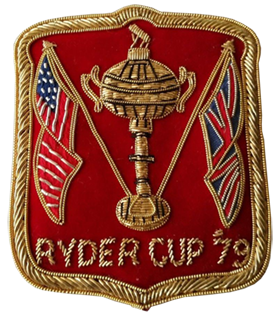
Team Europe included Peter Oosterhuis, Brian Barnes, Bernard Gallacher, Sandy Lyle, Mark James, Ken Brown, Tony Jacklin, Nick Faldo, Michael King, and the first two Europeans from the continent to play in a Ryder Cup, Spaniards Seve Ballesteros and Antonio Garrido. John Jacobs was the captain of the European team.
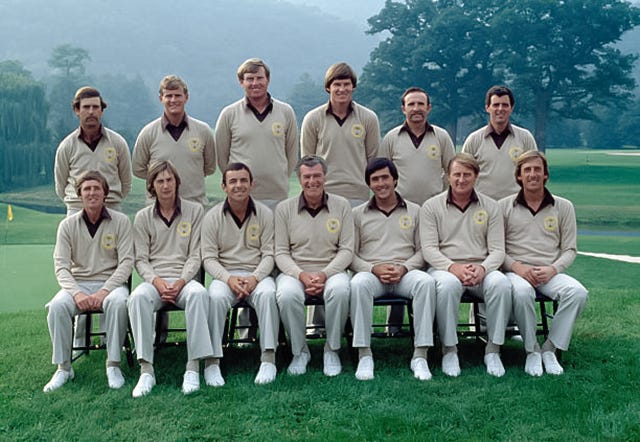
The matches were to be televised in both the U.S. (ABC) and in England (the BBC), but the ratings in the U.S. suffered due to the coverage that college football and the NFL garnered. Even so, there was a great deal of pride, and excitement on the ground in West Virgina.
“This is the first major professional tournament ever in West Virgina, and we want to do a major league job,” said James Searle, The Greenbrier’s director of sports.
Searle also emphasized the team element that the U.S. team was striving for saying, “Billy Casper really wants to instill a team atmosphere. As soon as the golfers get here, he’s going to hold a dinner to get everybody thinking team.”
Searle also estimated that 5,000 fans would be on hand for the Sunday matches.
“But we have the strongest team ever assembled.”
Casper arrived early in the week of September 10th and was quick to declare the confidence he had in his team.
“The British (European) team is probably the strongest one in history,” he said, “But we have the strongest team ever assembled.”
Thursday’s events included a ceremonial match between Casper and Jacobs, and then the opening ceremony where a kilt-clad band from Radford University, known as the Highlanders, played a variety of national anthems while flags were unfurled. Team Europe was dressed more formal than the American team wearing white shirts with maroon ties, blazers and grey pants. The Americans wore red polos with blue jackets.
Once the ceremonies of Thursday were complete, it was time to get the matches started with four-ball, or what Americans call best-ball. The Americans took a 3-1 lead after a barrage of birdies from Andy Bean and Lee Elder who won their match over Peter Oosterhuis and Nick Faldo, 2 and 1. Ballesteros and Garrido fell to Wadkins and Nelson, 2 and 1, even though Garrido made two long birdie putts on the first two holes. Wadkins and Nelson made five birdies after that while the two Spaniards could only add one more.
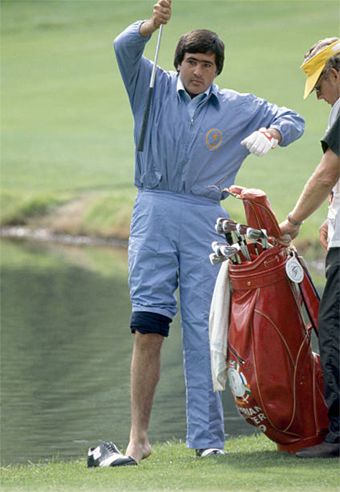
The only victory by the Euros in the morning belonged to Gallacher and Barnes who defeated Irwin and Mahaffey, 2 and 1. Gallacher and Barnes birdied four of the final seven holes.
In the afternoon foursome (alternate shot) matches, the Spaniards Ballesteros and Garrido became an answer to the trivia question, “who were the first players from the European continent to win a Ryder Cup point?” when they defeated Zoeller and Green. Tony Jacklin and Sandy Lyle managed to tie Trevino and Morgan while Irwin and Kite defeated Brown and Smith by a lopsided 7 and 6 score. Wadkins and Nelson defeated Gallacher and Barnes, 4 and 3. The score after the first day was 5 ½ to 2 ½ in favor of the Yanks.
Wadkins and Nelson continued their winning ways on Saturday, winning both their four-ball and foursome matches against Ballesteros and Garrido, but it wasn’t enough to prevent the Euros from keeping the score close. The Euros totaled five winning matches and the score after the second day was the U.S. 8 ½ and the Euros 7 ½. The visiting team was poised to end their 22-year winless streak. It would all come down to Sunday’s singles matches.
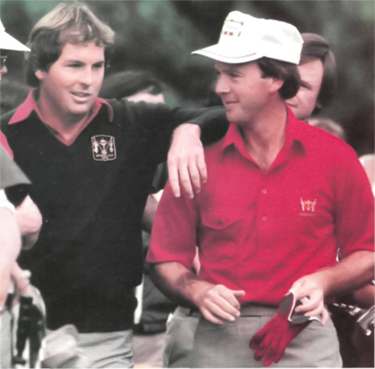
Nelson drew Ballesteros in the Sunday morning singles match and he kept his hot hand going by starting the match with three straight birdies. He added another three on his way to a 3 and 2 victory. Earlier, Wadkins, who had never lost a Ryder Cup match, was stunned by Gallacher, 3 and 2, which evened the score at that point.
Things really changed in favor of the Americans when Kite, who found himself three down to Jacklin with only eight holes to play, ripped off birdies on the 11th, 12th, and 13th holes to square up the match. He then hit an 8-iron to kick-in range on the 16th, giving him five birdies in an eight-hole stretch. He won his match 1 up.
Mark Hayes beat Garrido 1 up and then joined Kite at the 18th green to watch their teammates finish. They saw the result go up on the board with Bean winning his match over King, 4 and 3 and realized that Mahaffey, playing the final hole with a 1 up lead, could clinch the cup with at least a tie. They watched Mahaffey hold on for the victory and Hayes and Kite rushed onto the green to congratulate their teammate.
When Irwin defeated Smyth, the Americans had the victory wrapped up. The final score was 17-11. In the end, it was the rookies on the American team, especially Nelson with 5 points, who stole the spotlight from the European rookies, most notably Ballesteros and Garrido, who combined for just two points. But a new day had dawned, and the European players, with Ballesteros as a leader, would soon become formidable foes in Ryder Cup matches going forward.
Follow us on Facebook, Instagram, Twitter, YouTube and Threads
Tour Backspin Playlist
Thanks for reading! Please help us grow by sharing this article with your friends and family. Or, share this link.
Bonus Story
Last week, in our first week of Ryder Cup coverage, we teased a Bonus Story that would highlight a common thread between the 1963 Ryder Cup at East Lake Country Club in Atlanta, GA and the 1979 Ryder Cup played at The Greenbrier in White Sulphur Springs, WV. You can read about the 1963 Ryder Cup HERE.
This week, we reveal that common thread to be the absence of Jack Nicklaus from both matches. For one who contributed so much, to so many, Ryder Cups as a player, a captain, and the driving force behind adding players from continental Europe to the team formerly known as Great Britian and Ireland, it is a bit surprising that he missed both matches.
The PGA of America rules at the time of the 1963 matches, required a minimum of five years of being a professional before gaining eligibility to being named to the Ryder Cup team. Nicklaus turned pro in late 1961 and, therefore, was ineligible to make the 1963 team, the 1965 team at Royal Birkdale, and the 1967 matches at Champions Golf Club in Houston, TX. He finally qualified for the Ryder Cup team in 1969 for the matches that were also played at Royal Birkdale. These were the matches of his famous concession to Tony Jacklin.
After successfully lobbying for the inclusion of players from continental Europe for the 1979 matches, he then redesigned The Greenbrier course that would host the matches, but he would not play in that year’s Ryder Cup.
His game went sour on him in 1979 and he didn’t win a tournament, the first year of his professional career that he didn’t win a PGA TOUR event. He also had only one solo runner-up finish, in addition to a tie for second place with Ben Crenshaw behind Seve Ballesteros at the Open Championship. He wouldn’t win another PGA TOUR title until 1980.
As a result, he did not qualify and, while John Jacobs, the captain of the Euros, selected Peter Oosterhuis and Des Smyth as captain’s picks, the U.S. squad was selected strictly from a points list. Nicklaus qualified for the 1981 matches and finished his Ryder Cup playing career with a record of 16-8-3. He was captain in 1983 and 1987.
Bonus Story II
Tony Jacklin has a long memory and he never forgot what Mark James and Ken Brown did at the 1979 Ryder Cup at The Greenbrier. The two spend the week being surly, not willingly taking part of the festivities or being very enthused about the sportmanship aspect of the matches.
"I'm a member at The Greenbrier, where the match was played in 1979, and there isn't a picture hanging in that clubhouse where he [James] looked into a camera lens," Jacklin said to The Independent in 1998. "He and Ken [Brown], for whatever reason, made it their business to sabotage any chances the team had."
Jacklin did not approve of James being named the captain of the 1999 matches at The Country Club.
"They were levied the biggest fine there has ever been when they returned,” Jacklin went on. “And Ken Schofield's answer was to appoint Mark James to the PGA European Tour committee, where he's been ever since, now chairman. And that's fine. He's grown up. But he showed a lot of disrespect for his country and for everybody involved with the team that week. To reward that 20 years on, I can't see it. I'm not a prude but I can't see that would be right. But if the players and the establishment think it's right, so be it."
James received a £1500 fine for “unprofessional conduct,” while Brown was fined £1000 and banned from international competition for 12 months.
The Euro team that James captained fell to the U.S. team, captained by Ben Crenshaw, that featured one of the best comebacks in Ryder Cup history. Karma?
WHAT HOLE IS IT?
Are you on the leader board?
Tour Backspin Quiz | Ryder Cup Trivia
The record book shows that Mark James and Dr. Gil Morgan halved their match. How did Billy Casper almost screw up this halve?
Scroll down to for answer
Swing Like a Pro
Lanny Wadkins with great leg action. (Photo: Leonard Kamsler, Popperfoto via Getty Images)
Blind Shot
Click for something fun. 👀
Here’s how the home team can gain an advantage in the Ryder Cup through course setup. Learn more HERE from Golf Digest.
Uncorked, The Life and Times of Champagne Tony Lema tells the story of one of the tour’s biggest stars in the mid-1960s. A fascinating glimpse into the traveling caravan that was the PGA TOUR during an era where the fields were full of “Mad Men” era personalities. From a hardscrabble youth spent on the “wrong side of the tracks” in the Oakland suburb of San Leandro, to the temptations of Elko, Nevada, to the bright lights of the PGA TOUR, Uncorked tells a story of determination, redemption and, above all else, a love story that documents how Betty, Tony’s new wife, provided the direction and motivation for him to become a top star. Order on Amazon.
What is Hip?
It’s sweater season (photo: Golf Digest)
Tour Backspin Quiz Answer:
The rules of the Ryder Cup state that on Saturday night both captains would put a name in a sealed envelope, which would then be put in a safe. In the event that either player could not play, because of injury or illness, the match would be declared a tie. Mark James sustained a rib injury during a match on Friday, and the captain of the European team, John Jacobs, who understood the rule, put Jame’s name in his envelope. Billy Casper, captain of the U.S. team did not understand the rule, or was misinformed by PGA officials, and thought he was supposed to put the name of a player that he wanted to protect. He put Lee Trevino’s name in the envelope.
On Sunday morning, Casper learned of his mistake and asked Jacobs if he could change the player in the envelope. The Europeans agreed to allow him to change the name rather than make a scene. Casper replace Trevino’s name with Dr. Gil Morgan’s name. Morgan dislocated his left shoulder in a fall on Friday.
Casper had the advantage of knowing the lineup for Sunday’s singles matches and now put Trevino in the clean-up spot against Sandy Lyle. That might have been quite messy if the outcome of the matches came down to the last match and Trevino won.
Thank you for reading this far, I know your time is valuable and choosing to spend some of it on what I’ve created is gratifying. If you want to help support the work we’re doing, please consider upgrading. It’s just $36 a year and you’ll be helping to tell the stories from one of golf’s golden ages.
Vintage Ad
Final Thoughts
Can you believe that Larry Nelson wore his Amana hat at the 1979 Ryder Cup matches?
That whole envelope mess in our trivia feature would not have been handled that way today. Pretty sure of that.
One of the cool things about the vintage ads we run is that a P.O. Box was required to “learn more” instead of a button on a screen.
Look at that shaft bend at the top of Lanny Wadkins’ backswing.





